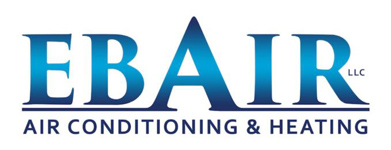Are you looking for an effortless and effective way to boost your indoor air quality at home? Whole-house air purifiers are an ideal solution for removing contaminants such as allergens, dust, mold and other dangerous particles from the air. Purification systems can also remove airborne contamination such as pet dander, mold spores and smoke, producing a healthier environment for everyone in the home. With the correct air purifier, you’ll have a powerful tool in your tool kit for better indoor air quality in East Bernard.
Let’s explore the pros of an air purifier and why they are worthy of buying.
Will an Air Purifier Help Me?
Air purifiers are very good at decreasing levels of airborne particles like dust, mold spores, pollen, pet dander and smoke from the air. Some units are even efficient enough to eliminate very small particles, such as those from odors or viruses, from your home’s air.
There are a lot of designs of air purifiers to choose from, ranging from compact, standalone models to whole-house air purifiers that work in conjunction with your central HVAC system. Depending on the type, some purifiers use effective air filters while others use ultraviolet (UV) light for its sanitation properties. Some models even make use of both for the highest air quality benefits.
What Are Air Purifiers for?
Air purifiers draw in air from the surrounding environment and trap unwanted pollutants and particles as they are pulled through a series of filters. These filters are built of fine mesh or activated carbon that is ideal for catching dust, molds, pet dander, smoke particles, chemicals and other airborne impurities. The fan in the air purifier then pushes clean air back into the ductwork for circulation.
How Does an Air Purifier Work?
Air purifiers bring in air with a fan before blowing it through one or more filters. Debris is gradually trapped by the layers of filters, and then the newly purified air is blown out of the purifier. Depending on its design, an air purifier may incorporate electrical charges or ultraviolet light to clean out additional contaminants.
Other types of filtration found in air purifiers:
- High Efficiency Particulate Air (HEPA) filters: One of the most effective filter designs available, HEPA filters are developed to take out up to 99.97% of particles from the air—as little as 0.3 microns! Bear in mind that such efficiency can also minimize airflow.
- Activated carbon filters: These filters have finely ground activated carbon, which features an electric charge efficient at attracting things like odor particles.
- Photocatalytic oxidation: This system uses UV light to start a reaction that breaks down microorganisms like bacteria, mold and some viruses. With their DNA impaired, many microbes can no longer replicate and are basically done away with.
Do Air Purifiers Help with Dust?
Air purifiers are designed to help cut down on the levels of dust in your home, providing relief from allergies and other respiratory issues caused by airborne particulate matter. By catching particles like dust in their filtration systems, air purifiers can make the air inside a room or house cleaner and fresher.
If you’re looking to lessen the dust in your home, reach out to a certified Lennox dealer to enhance your indoor air quality in East Bernard.
Do Air Purifiers Help with Allergies?
High-efficiency air purifiers are designed to capture more than 99% of pollutants and particles, which means the air you inhale after it goes through an air purifier is significantly cleaner and healthier. This helps reduce symptoms linked to allergies and respiratory illnesses, because it removes potential irritants from the air.
Can an Air Purifier Remove Mold Spores?
Air purifiers are one of the most efficient ways to counteract mold. By trapping airborne particles and spores, they help stop mold from becoming a health hazard in enclosed spaces. Additionally, many purifiers come with other features that are designed to combat mold, such as activated carbon filters and ultraviolet (UV) lights. Activated carbon filters help take out scents and other unwanted elements from the air, while UV lights can kill any active mold spores in the air. Together, these features allow for a comprehensive cleaning of the air in your home or office, which helps keep everyone safe and healthy.
Can an Air Purifier Take Care of Bad Smells?
Not only do air purifiers help raise air quality by removing particles like dust, pollen, smoke and other allergens from the air, but some air purifiers also help remove any annoying smells that might be wafting through your home.
Air purifiers use a combination of filters, including activated carbon and HEPA filters, to trap and clear out odors from the environment. This assures that your home will stay smelling fresh and clean without any worry of lingering odors. By purchasing a whole-home air purifier, you can make certain that that your home has excellent indoor air quality and is pleasant-smelling all year-round.
